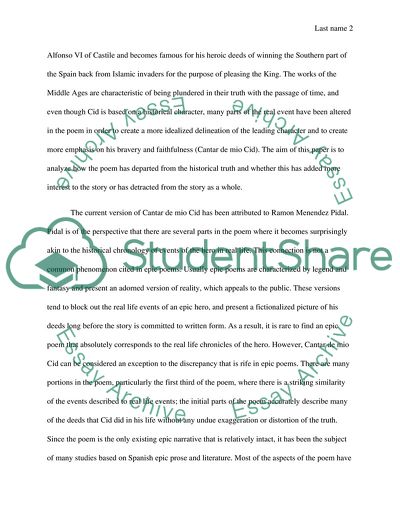Cite this document
(El Cantar de Mio Cid - How Reliable Are the Described Events Essay, n.d.)
El Cantar de Mio Cid - How Reliable Are the Described Events Essay. Retrieved from https://studentshare.org/literature/1747687-on-a-number-of-occasions-the-cantar-del-mio-cid-departs-from-the-historic-truth-discuss-wether-this-add-or-detract-from-the-story-as-a-hole
El Cantar de Mio Cid - How Reliable Are the Described Events Essay. Retrieved from https://studentshare.org/literature/1747687-on-a-number-of-occasions-the-cantar-del-mio-cid-departs-from-the-historic-truth-discuss-wether-this-add-or-detract-from-the-story-as-a-hole
(El Cantar De Mio Cid - How Reliable Are the Described Events Essay)
El Cantar De Mio Cid - How Reliable Are the Described Events Essay. https://studentshare.org/literature/1747687-on-a-number-of-occasions-the-cantar-del-mio-cid-departs-from-the-historic-truth-discuss-wether-this-add-or-detract-from-the-story-as-a-hole.
El Cantar De Mio Cid - How Reliable Are the Described Events Essay. https://studentshare.org/literature/1747687-on-a-number-of-occasions-the-cantar-del-mio-cid-departs-from-the-historic-truth-discuss-wether-this-add-or-detract-from-the-story-as-a-hole.
“El Cantar De Mio Cid - How Reliable Are the Described Events Essay”, n.d. https://studentshare.org/literature/1747687-on-a-number-of-occasions-the-cantar-del-mio-cid-departs-from-the-historic-truth-discuss-wether-this-add-or-detract-from-the-story-as-a-hole.


